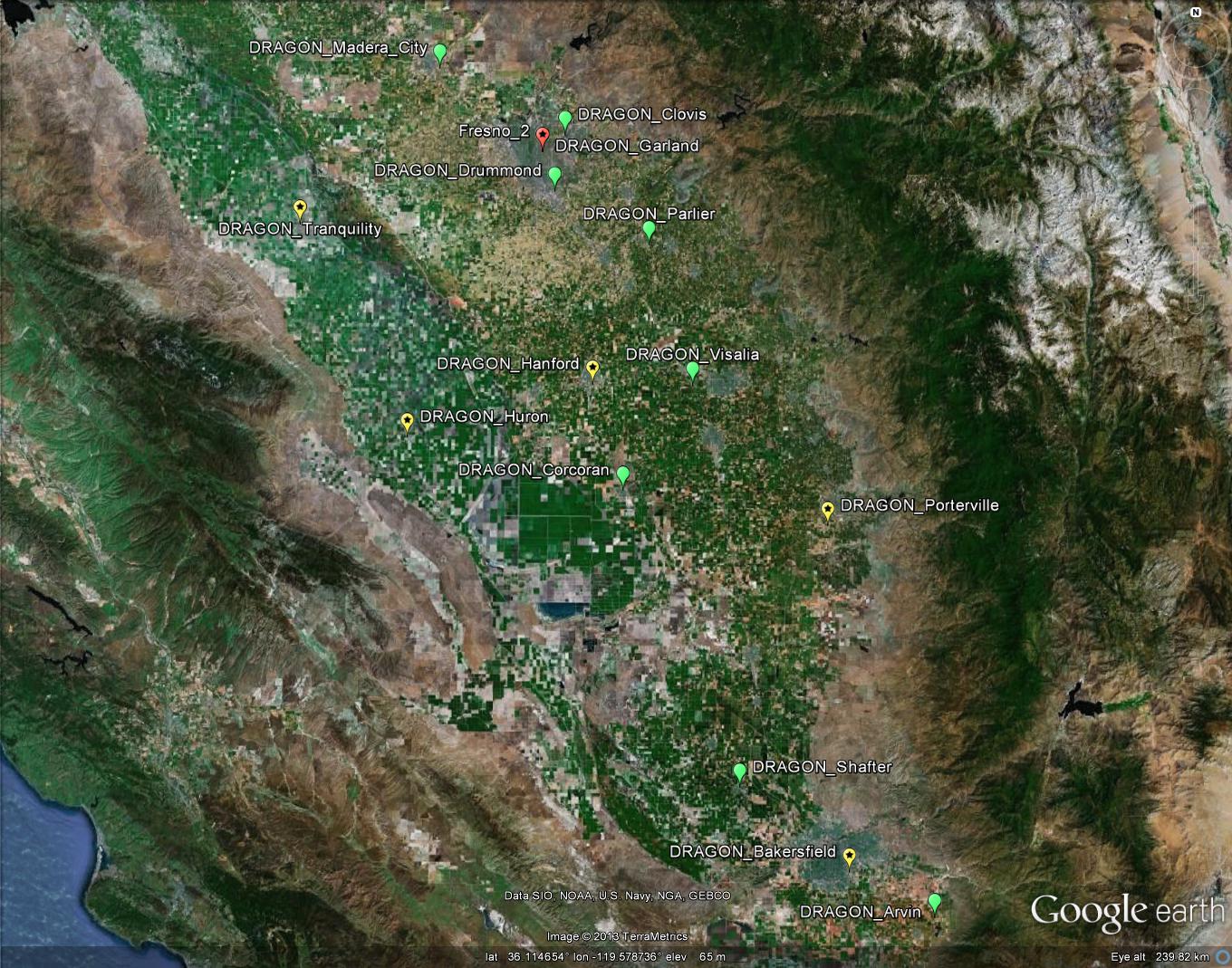The campaign will be implemented under the NASA-funded Earth Venture airborne mission, DISCOVER-AQ (Deriving Information on Surface Conditions from Column and Vertically Resolved Observations Relevant to Air Quality). The campaign will employ NASA aircraft to make a series of flights, with scientific instruments on board to measure gaseous and particulate pollution, during a month period beginning in mid-January 2013 in the San Joaquin Valley of California. The distribution encompasses a 250 km long by 100 km wide region.
DRAGON-USA 2012-2013 instrument deployments will occur in and around the San Joaquin Valley of California (Figure 1) with approximately fifteen regionally distributed instruments.

Figure 1. DRAGON-USA 2012-2013 Site Distribution Download KMZ file.
DRAGON Text Lists
+ Level 1.0 AOD Data (TXT)
+ Level 1.5 AOD Data (TXT)
+ Level 2.0 AOD Data (TXT)
DRAGON Google Earth Distribution
+ Level 1.0 AOD Data (Google Earth KMZ)
+ Level 1.5 AOD Data (Google Earth KMZ)
+ Level 2.0 AOD Data (Google Earth KMZ)
|